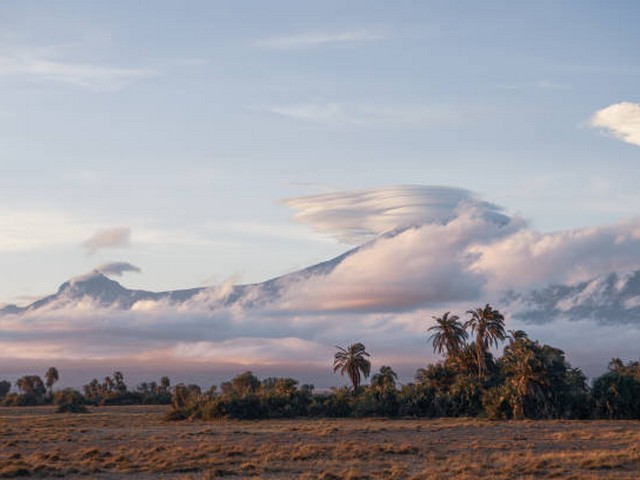Is Kilimanjaro Trekking Worth It? Discover the Unforgettable Journey with KCTE
Introduction: The Call of the Majestic Kilimanjaro
Have you ever dreamt of standing atop the world, watching the sunrise spread golden light across vast landscapes below you? Trekking Mount Kilimanjaro offers not just a climb, but a journey through diverse ecosystems and an opportunity to challenge yourself both physically and mentally. At Kilimanjaro Centre for Trekking and Ecotourism (KCTE), we ensure that this dream turns into an awe-inspiring reality, filled with personal achievements and unforgettable memories. But you may wonder, "Is Kilimanjaro trekking worth it?" Let’s dive into the myriad of reasons that make this adventure truly invaluable.
Why Choose Kilimanjaro?
Unparalleled Natural Beauty
Kilimanjaro, the highest peak in Africa, is more than just a mountain; it’s a monument of nature’s splendor. From lush rainforests buzzing with vibrant life to alpine deserts and finally the icy cap, each zone offers a unique backdrop that feels almost otherworldly. The ascent presents a kaleidoscope of scenic vistas that promise to leave you breathless – both figuratively and literally!
A Test of Will and Endurance
Climbing Kilimanjaro is an endurance test like no other. It challenges your physical limits and mental resilience. Reaching the summit, Uhuru Peak, at 5,895 meters (19,341 feet) is an accomplishment that provides not just bragging rights but also a profound sense of achievement. The journey instills a strong belief in one’s capabilities and a newfound respect for nature’s grandeur.
Cultural Immersion
The trek also offers a rich cultural tapestry. The Chagga people, indigenous to the mountain’s slopes, have a deep connection with Kilimanjaro. Engaging with local guides and porters from this community provides a glimpse into their rich heritage and traditions, turning the trek into a culturally enlightening experience.
The KCTE Difference: Why Book Your Climb with Us?
Expertise and Safety
At KCTE, your safety is our paramount concern. Our expert guides are trained to handle the altitude and its challenges, ensuring a safe and enjoyable trek. With years of experience scaling Kilimanjaro’s routes, our team provides invaluable insights and support throughout your journey.
Eco-Friendly Trekking
We pride ourselves on promoting ecotourism. Our practices ensure minimal environmental impact and support the conservation efforts to preserve Kilimanjaro’s beauty for future generations. Trekking with KCTE means you’re also contributing to sustainable tourism.
Tailored Experiences
We understand that every climber is unique, and so should be their trekking experience. KCTE offers customized treks that cater to your fitness level, preferences, and schedule, ensuring your journey to the roof of Africa is as personal as it is grand.
Best Routes to Explore
The Marangu Route: The Classic Path
Often termed the "Coca-Cola" route, Marangu offers a direct path with comfortable hut accommodations. It’s perfect for those who prefer a less strenuous climb without forgoing the scenic beauty.
The Machame Route: The Scenic Way
Favored for its stunning views and challenging terrain, the Machame route is more demanding but immensely rewarding, featuring diverse landscapes and a higher success rate for reaching the summit.
The Lemosho Route: The Untouched Trail
Starting from lush rainforests and extending to beautiful alpine meadows, the Lemosho route is less crowded, offering a serene and intimate trekking experience.
Preparing for Your Trek
Embarking on a trek to Kilimanjaro requires preparation. From physical training to packing the right gear, every aspect plays a crucial role in the success of your climb. At KCTE, we provide comprehensive prep guides and checklists that ensure you’re fully prepared for the adventure ahead.
Frequently Asked Questions
What is the best time to climb Kilimanjaro?
The best times are during the dry seasons: January to mid-March and June to October. These months offer the most favorable weather for trekking.
How fit do I need to be to climb Kilimanjaro?
While you don’t need to be an athlete, a moderate level of fitness is required. Preparing with cardio, strength training, and hikes can greatly improve your stamina and comfort during the climb.
What should I pack for my Kilimanjaro trek?
Essential items include sturdy hiking boots, thermal layers for the summit, rain gear, a sleeping bag suitable for low temperatures, and a hydration pack. For a detailed list, KCTE provides a tailored packing guide for its clients.
Conclusion: Your Journey Awaits
So, is Kilimanjaro trekking worth it? Absolutely! The physical challenge, the natural beauty, the cultural insights, and the personal triumphs all weave together into an experience that’s more than just a climb—it’s a life achievement. At Kilimanjaro Centre for Trekking and Ecotourism, we are dedicated to providing you with the most memorable and safe trekking experience. Ready to conquer the peak and collect memories that last a lifetime? Book your Kilimanjaro adventure with KCTE today and take the first step on a journey unlike any other.
Call to Action
Visit our website or contact us directly to learn more about our Kilimanjaro trek offerings and how we can make your dream climb a reality. Join the ranks of those who have witnessed the sun rise from the top of Africa – an experience that you will cherish forever. Connect with Kilimanjaro Centre for Trekking and Ecotourism (KCTE) now, and let’s make those dreams come true!




